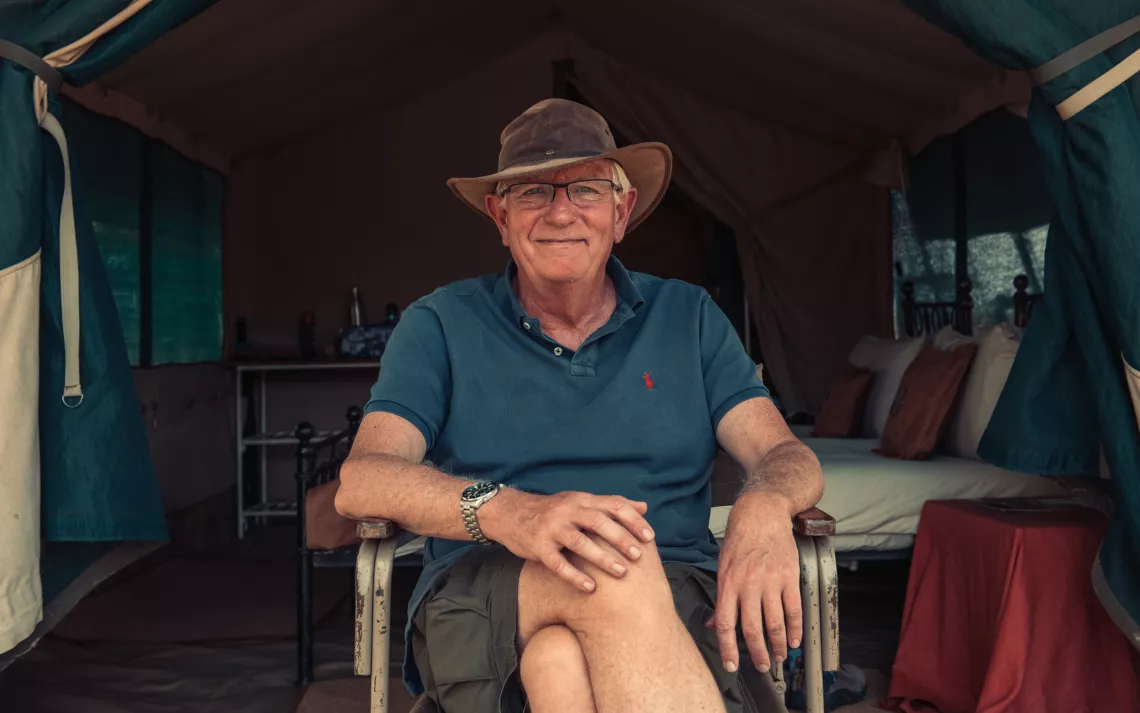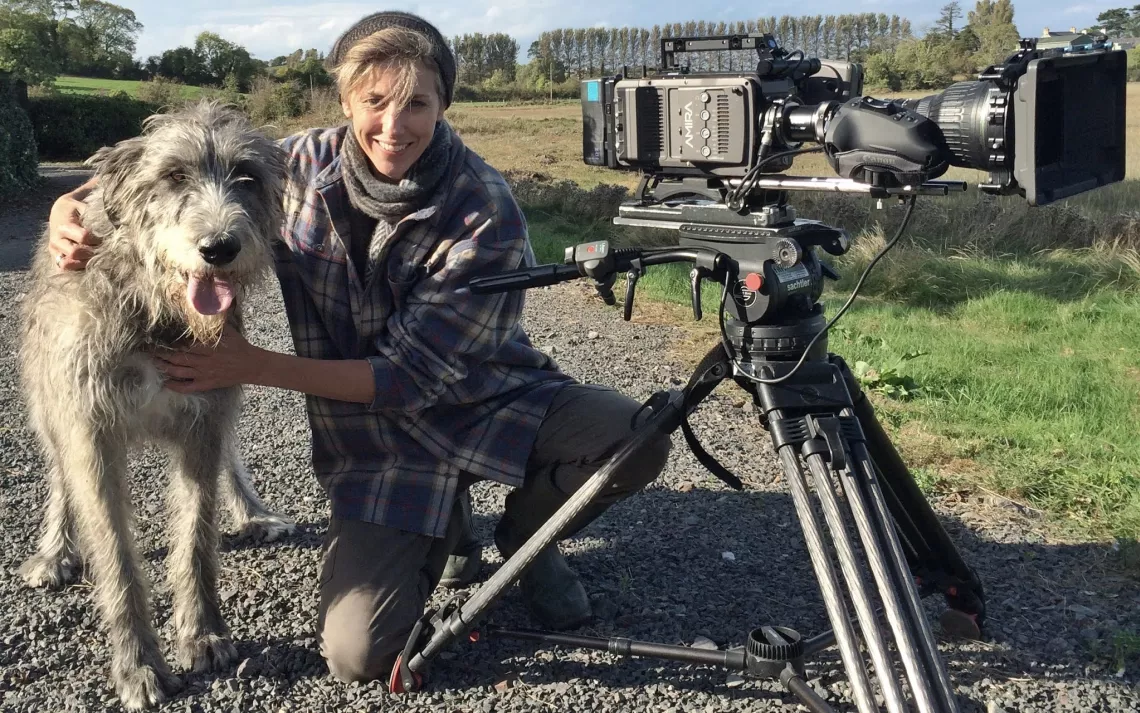Behind the Scenes With Netflix's “Our Planet”
Its filmmakers talk about creating the epic-yet-uncomfortable nature series

Photo courtesy of Ben MacDonald
The natural history all-stars of modern TV programming are at it again, this time with Our Planet, an eight-episode series now available on Netflix. Planet Earth and Blue Planet creators Alastair Fothergill and Keith Scholey produced the show, and Sir David Attenborough, whose soothing voice is practically synonymous with wildlife docs, narrates it. The series is shot by wildlife cinematographers such as Sophie Darlington, who learned her craft in the Tanzanian bush alongside the likes of National Geographic photographer Hugo van Lawick (a.k.a. Jane Goodall’s ex-husband). Sierra reviewed the program in its May/June edition, and followed up by phone with Scholey and Darlington to learn exactly what goes into making the splendorous viewing experience that is Our Planet.
***
Sierra: Tell us about your inspiration to create this series.
Scholey: My partner in crime Alastair [Fothergill] and I had a big passion to do another big-label series, but we wanted it to be a story for our time. We’d been brainstorming about how to make a series that draws in big audiences but also tells a hard story, and we finally settled on a show that’s based on giving viewers solutions, solutions, solutions—on building a show around the notion that there is a way out of this mess.

How did you set it apart from its nature-doc series predecessors? What elements of previous shows did you most want to preserve, and where did you seek to innovate?
Scholey: I think the major aspect we wanted to preserve was cinematic storytelling—we wanted home viewers to feel like they were going to the theater and experiencing nature as the most epic thing out there—which is what it is. So the idea was to find new stories and cinematic techniques, but to maintain that epic cinematic style—to tell a story of our time, but a grand story.
Darlington: It felt important that we keep some positive messages in there. The series contains stories that were heartbreaking but that also give you massive hope, like the miraculous comeback of the wild dogs in the Serengeti [featured in episode 1] from local extinction. Seeing them back in their home was incredible—a really heartwarming and triumphant thing.

Scholey: One of the wonderful messages of this series is that when we do something right, we get rewarded. It all actually boils down to the fact that when you get out of her way, nature will bounce back. So just respect her, and she’ll do her job perfectly well.
What’s it like to create nature TV for a major streaming service as compared to a more traditional broadcast audience?
Scholey: Right from the word “Go!” when we met up with Netflix, we realized this was a very, very exciting moment for conservation—we could intimately reach 14 million viewers in different countries around the world. With traditional broadcast, a show comes on at night and then it disappears—most US viewers who saw the original Planet Earth saw it on DVD, not broadcasting.
Do you have a favorite moment from the series?
Darlington: I’ve traveled the world, but shooting the sandhill crane migration in Nebraska’s Platte River—where hundreds of thousands of cranes gather because several conservation organizations have worked together to enable them to be there—stands out as one of the most beautiful, awe-inspiring things I’ve ever experienced. Getting the perfect nature shot takes about a year of planning—six months of research and then plenty of logistical planning. It’s a communal effort, and it was just so rewarding to work with these farmers in the local community and eventually get to see the sky fill with these beautiful birds. It’s featured toward the end of the “Freshwater” episode [episode 7].
Scholey: I still think the most thrilling sequence is the one in the “Jungles” episode [episode 3] featuring western parotia—birds of paradise that have never been filmed before. Remote cameras on the female bird’s shoulder show the six stages of the male’s mating dance—no one had ever actually witnessed what the female sees, like the eye flashing and changing color, which was really quite extraordinary. It makes me laugh every time I watch it—nature at her best!
So is “Jungles” your favorite episode?
Scholey: We were really pleased that every episode actually stands on its own by going into its own big world [mountains, tundras, deserts, jungles, forests, grasslands, deep seas, and freshwater] with a character all of its own, and you get absorbed into that character. The “Jungles” episode really is such a great stand-alone film, but they’re all so different and surprising that it’s very hard for me to have a favorite.
Darlington: You’re like a proud dad without a favorite child.
What was the most difficult sequence to film?
Scholey: What took the most time was filming wild Siberian tigers [in episode 8, “Forests”], which became a complete labor of love for all involved. For two winters, we put a cameraman in a tiny hide, which is basically a box that’s big enough for a bunk bed, and just left him there to film 37,000 hours of film, effectively. And out of that, we got a few of the most breathtaking shots of wild Siberian tigers ever taken, so I guess it was worth it! Our producer Kieran worked on this sequence over a two-year period, and boy was he a happy chap when he finally saw the good shots.
Darlington: The sit-and-wait is a huge part of the job. Pretty much all of us cinematographers and camera people logged a lot of time sitting in a very small place—I was stuck in a hide in Nebraska for 27 hours—which is a slightly peculiar experience, but definitely worthwhile. And of course, it was very expensive and challenging for us to film the “High Seas” sequences [in episode 6]—we used some of the only two dozen or so subs that can actually go to the bottom of the ocean. But wow, did they reveal extraordinary things!
What surprised you most in researching this series?
Darlington: The thing that always surprises me is that every time you think you know something about nature, you get to learn something new—there’s always so much to learn; it’s just extraordinary how many new things this series will expose people to.
Scholey: I’ve been in this business for probably too long [laughs], and I had no idea about the little squirrel with the glue guns for hands [featured in episode 8, “Forests”]. I think the thing, though, that also surprised me was the fact that even in the time it took us to make this series, the world seems to have become far more unstable. When we started, we wanted to show wildlife that was in danger. By the time we got to the end, we were all convinced that whole natural systems that the world depends on are in danger. The destruction that has happened just during the past four years—the bleaching of the barrier reef, for instance—the biggest natural systems failure in the history of humanity—is just more evidence of how quickly things are changing.
So what are you hoping viewers take away from Our Planet?
Scholey: Foremost, that the wild and natural world is wonderful and incredible, but they also need to be really clear on the fact that the natural world is facing great difficulty—there’s no beating around the bush. But I hope they come to understand that the problems are relatively straightforward, and that we know what the solutions are, and that if we just apply those solutions—for instance, if we stop hunting whales to extinction—then it’s pretty simple: Nature is resilient and bounces back. I think it’s important that people really want nature back and know that it’s within their grasp to have her back. There’s so much doom and gloom out there, but it’s not gone forever. It can and will come back.
 The Magazine of The Sierra Club
The Magazine of The Sierra Club



